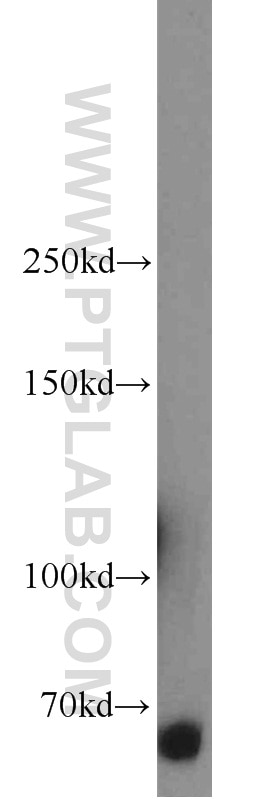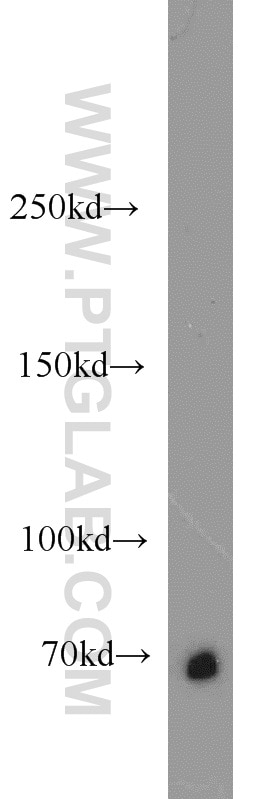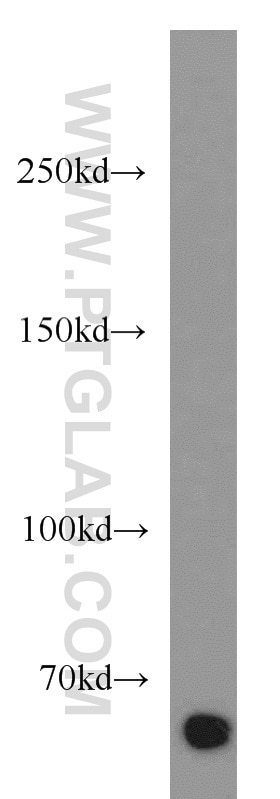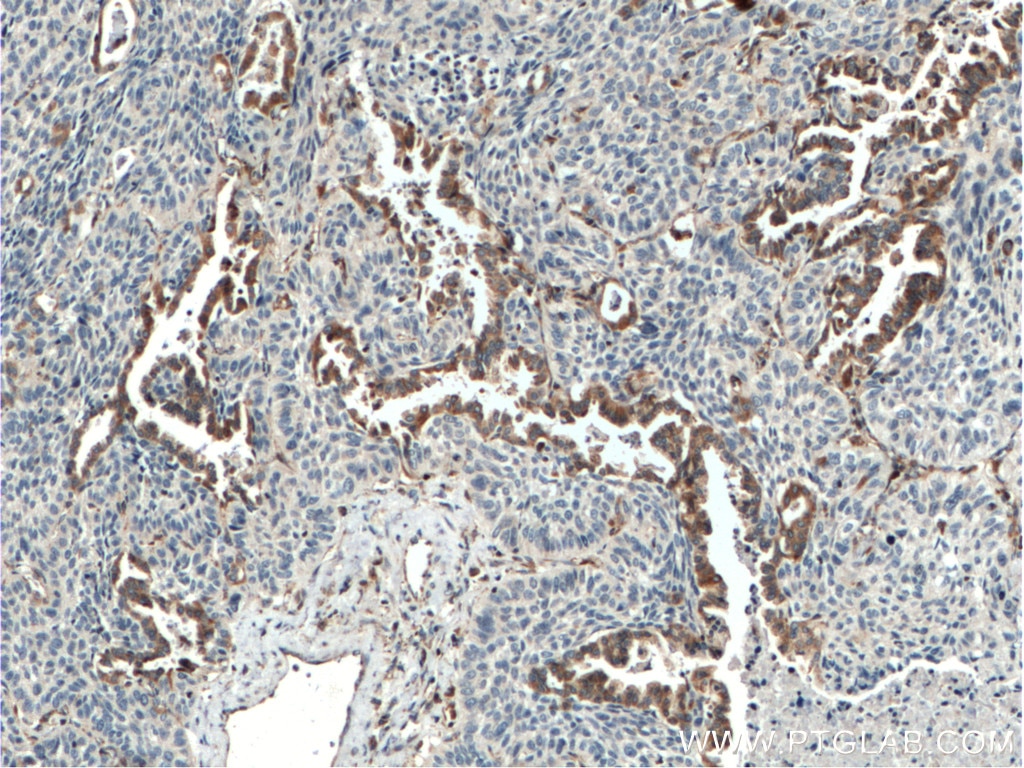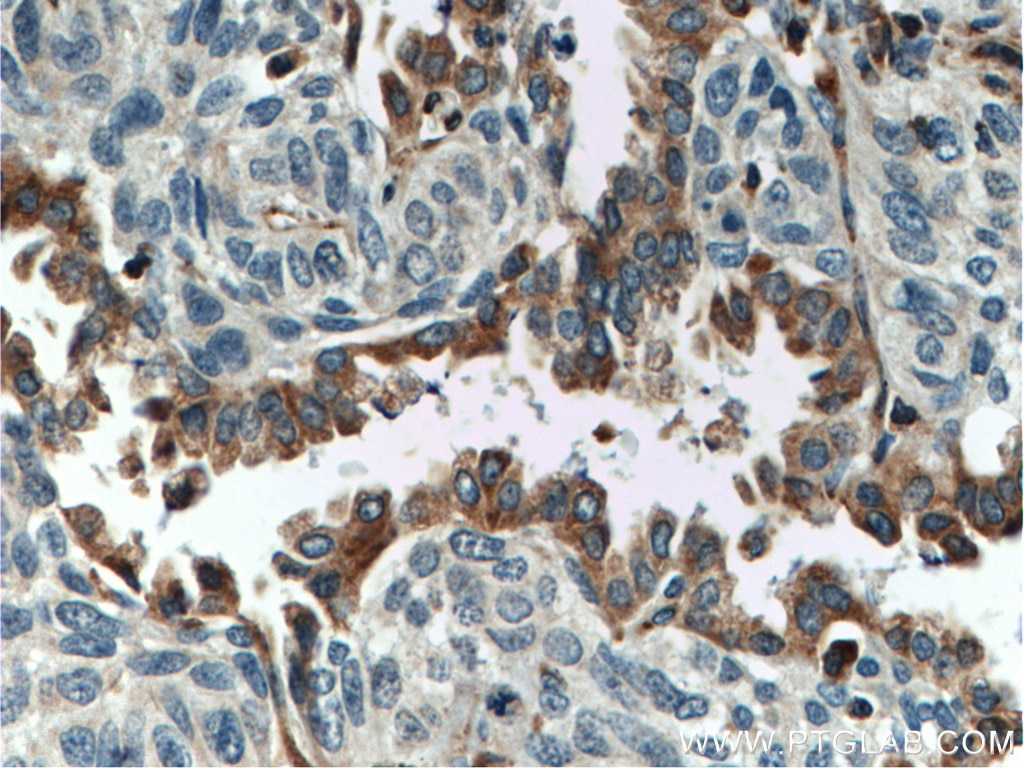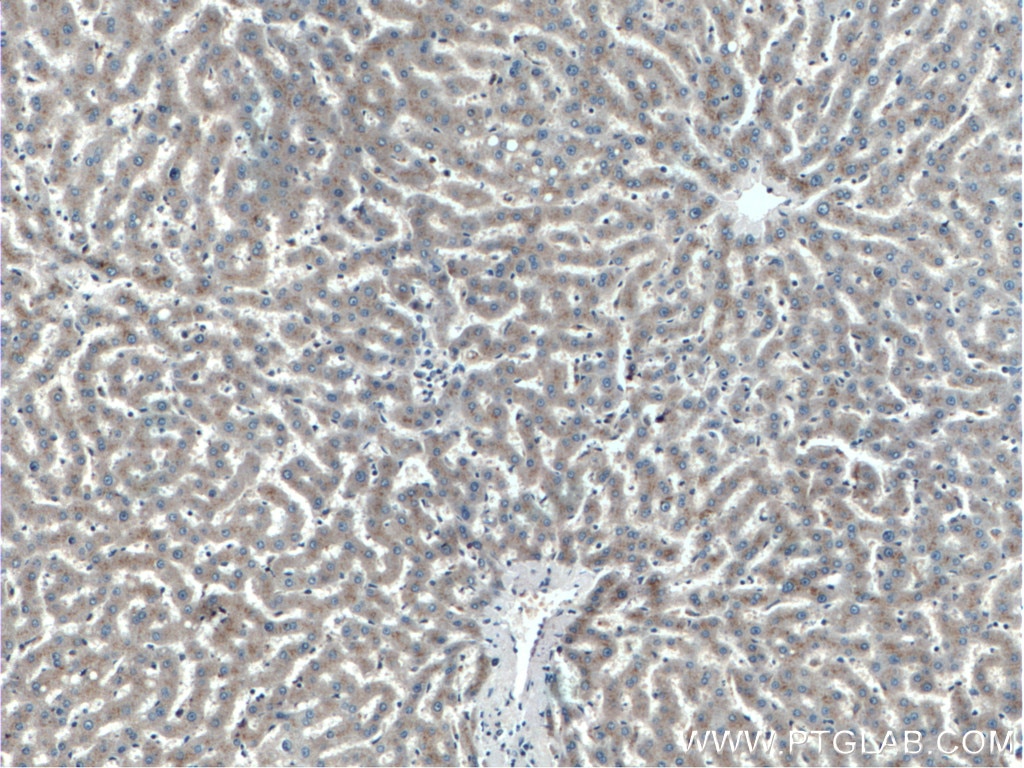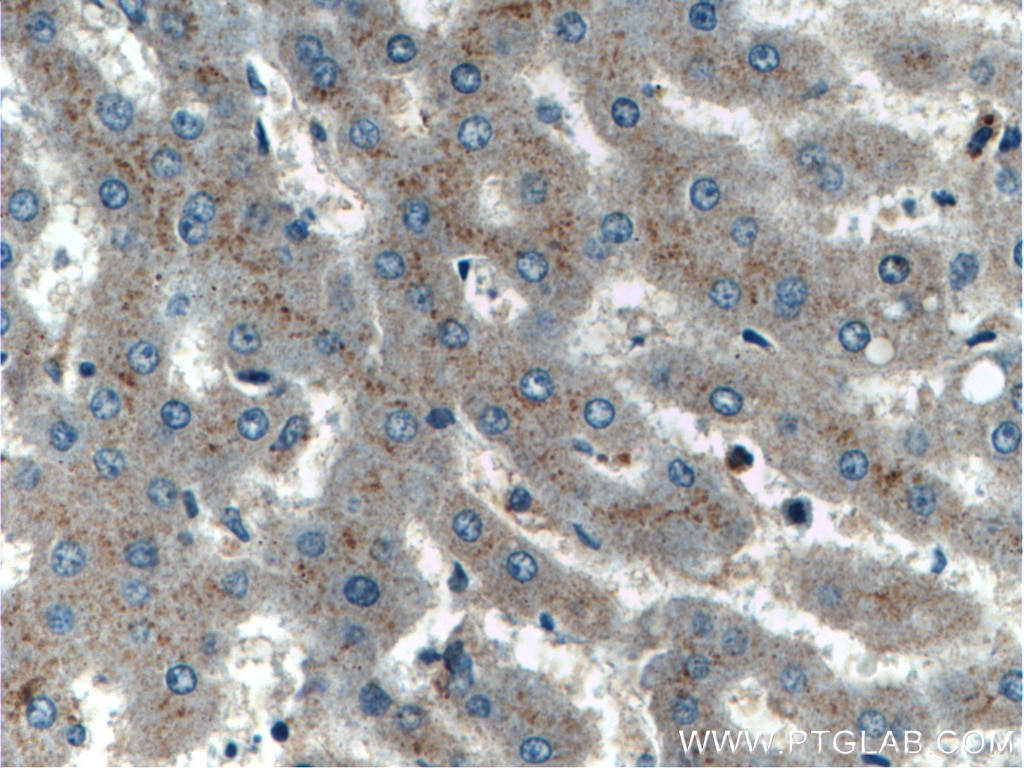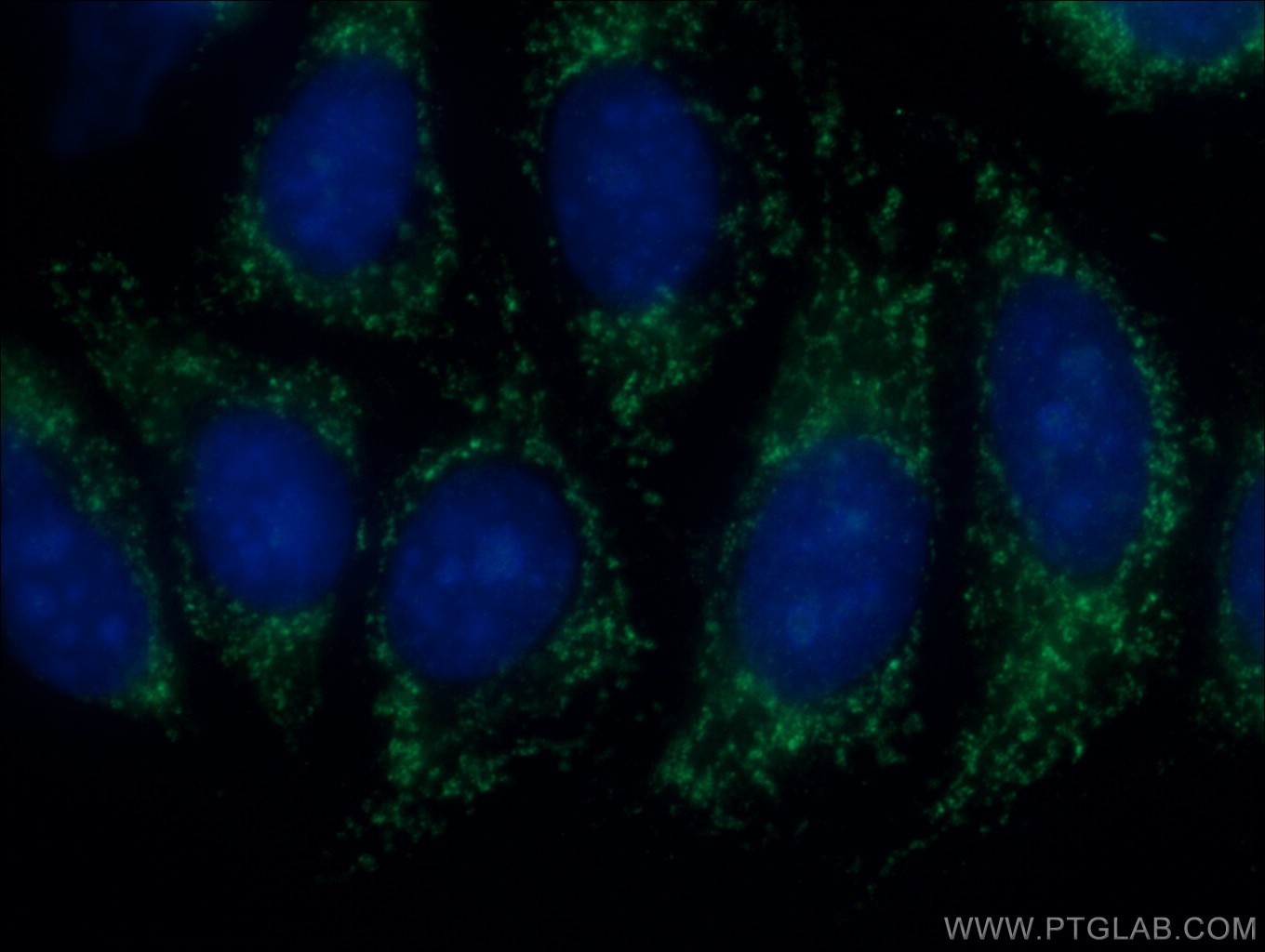ERAP2 Polyklonaler Antikörper
ERAP2 Polyklonal Antikörper für IF, IHC, WB,ELISA
Wirt / Isotyp
Kaninchen / IgG
Getestete Reaktivität
human, Maus
Anwendung
WB, IHC, IF,ELISA
Konjugation
Unkonjugiert
Kat-Nr. : 14637-1-AP
Synonyme
Galerie der Validierungsdaten
Geprüfte Anwendungen
| Erfolgreiche Detektion in WB | K-562-Zellen, A549-Zellen, Maus-Thymusgewebe |
| Erfolgreiche Detektion in IHC | humanes Lungenkarzinomgewebe, humanes Lebergewebe Hinweis: Antigendemaskierung mit TE-Puffer pH 9,0 empfohlen. (*) Wahlweise kann die Antigendemaskierung auch mit Citratpuffer pH 6,0 erfolgen. |
| Erfolgreiche Detektion in IF | HepG2-Zellen |
Empfohlene Verdünnung
| Anwendung | Verdünnung |
|---|---|
| Western Blot (WB) | WB : 1:500-1:1000 |
| Immunhistochemie (IHC) | IHC : 1:50-1:500 |
| Immunfluoreszenz (IF) | IF : 1:20-1:200 |
| It is recommended that this reagent should be titrated in each testing system to obtain optimal results. | |
| Sample-dependent, check data in validation data gallery | |
Produktinformation
14637-1-AP bindet in WB, IHC, IF,ELISA ERAP2 und zeigt Reaktivität mit human, Maus
| Getestete Reaktivität | human, Maus |
| Wirt / Isotyp | Kaninchen / IgG |
| Klonalität | Polyklonal |
| Typ | Antikörper |
| Immunogen | ERAP2 fusion protein Ag6216 |
| Vollständiger Name | endoplasmic reticulum aminopeptidase 2 |
| Berechnetes Molekulargewicht | 110 kDa |
| Beobachtetes Molekulargewicht | 61-65 kDa |
| GenBank-Zugangsnummer | BC065240 |
| Gene symbol | ERAP2 |
| Gene ID (NCBI) | 64167 |
| Konjugation | Unkonjugiert |
| Form | Liquid |
| Reinigungsmethode | Antigen-Affinitätsreinigung |
| Lagerungspuffer | PBS mit 0.02% Natriumazid und 50% Glycerin pH 7.3. |
| Lagerungsbedingungen | Bei -20°C lagern. Nach dem Versand ein Jahr lang stabil Aliquotieren ist bei -20oC Lagerung nicht notwendig. 20ul Größen enthalten 0,1% BSA. |
Hintergrundinformationen
ERAP2(Endoplasmic reticulum aminopeptidase 2) is also named as LRAP(Leukocyte-derived arginine aminopeptidase) and belongs to the peptidase M1 family. It plays a central role in peptide trimming, a step required for the generation of most HLA class I-binding peptides. It can form heterodimers with ERAP1(PMID:15908954). It has 4 isoforms produced by alternative splicing. And defects in the expression of this gene may cause improper antigen processing, possibly leading to favor tumor escape from the immune surveillance.
